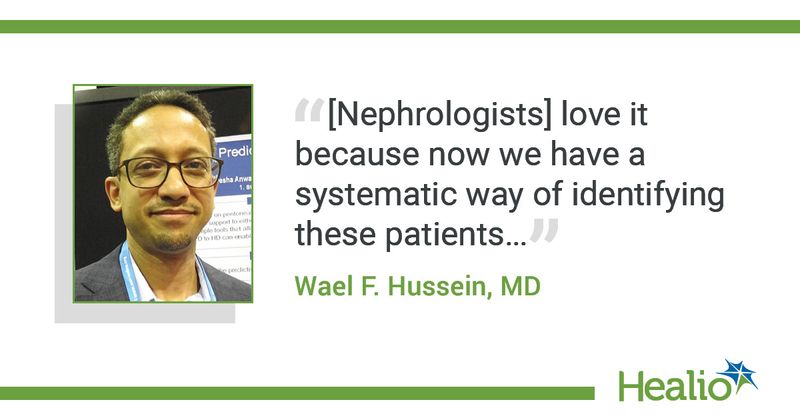Evaluation helps clinicians identify patients at risk for transfer from PD to hemodialysis
Click Here to Manage Email Alerts
ORLANDO — Clinicians who asked themselves, “Would I be surprised if this patient transferred from peritoneal dialysis to hemodialysis within 6 months?” helped them identify patients at risk, according to a presentation at ASN Kidney Week.
“Patients do not last on peritoneal dialysis for a long time and identifying those who are not coping well with dialysis is important because either you can help them remain on their own personal dialysis or identify that they’re better off going into in-center hemodialysis (HD),” Wael F. Hussein, MD, told Healio.

In a prospective observational study, researchers explored a clinician’s ability to identify high-risk patients in a cohort of 1,275 patients undergoing PD by asking clinicians, “Would you be surprised if this patient transferred to HD in the next 6 months?” Researchers called this the PD surprise question, which was answered “yes” or “no” to identify low or high risk among patients. Patients were followed for 6 months.
Registered nurses who provided responses to the PD surprise question regarding 1,123 patients identified 15% as high risk and 85% as low risk. Researchers observed 11% of patients in the high-risk group transferred to HD and 3% of patients in the low-risk group transferred to HD during the 6-month period.
As for the nephrologists who provided responses, 17% of 692 patients evaluated were determined to be high risk and 83% were identified as low risk. Similarly, 12% of the high-risk patients moved to HD within 6 months, as well as 2% of the low-risk patients.
“We’re developing a quality improvement program now to say, ‘OK, we identified these patients. What are we going to do different?’” Hussein said. He added, “[Nephrologists] love it because now we have a systematic way of identifying these patients ... ”

